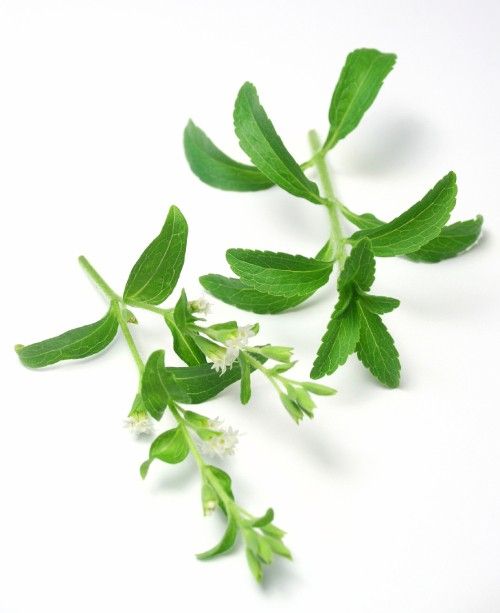Steviol Glycosides Remain Unaltered Even after Stevia Is Commercially Purified and Extracted, Study Suggests
The Global Stevia Institute says this is the first study to determine whether steviol glycosides are modified or not in the extraction and purification processes.
Photo © iStockphoto.com/dirkr

Stevia continues to gain popularity as a natural, zero-calorie sweetener derived from the stevia leaf (Stevia rebaudiana). Some, however, have questioned whether the commercial processing that steviol glycosides (stevia’s sweetening compounds) undergo, once extracted from the stevia leaf, alters the glycosides to such an extent that stevia extracts should no longer be considered natural. A new study, published in the International Journal of Food Science and Technology,1 found that steviol glycosides were not altered from the original plant to the extracted sweetener. The Global Stevia Institute (GSI) says that this is the first study to determine whether steviol glycosides are modified in the extraction and purification processes. The research was conducted at the University of Bronn (Germany) using stevia leaves provided by PureCircle Ltd. (Chicago).
Researchers tested three batches of stevia products. Each batch contained: 1) the original dried stevia leaf, 2) the first water extract, and 3) a final 95%-purity stevia leaf extract end product. The study authors used ultraviolet high-performance liquid chromatography (UV-HPLC) and high-performance liquid chromatography electrospray ionization tandem mass spectrometry (HPLC/ESI-MS/MS) to analyze individual steviol glycoside molecules.
Specifically, the study authors sought to determine whether the commercial-scale, high-purity extract contained the same steviol glycosides and glycoside pattern found in untreated leaves and the first water extract of stevia leaves. For the purposes of this study, the researches focused on nine steviol glycosides, per a 2010 Joint Expert Committee on Food Additives (JECFA) specification.
“Our results show that the commercial powders of extracted steviol glycosides provided by PureCircle Ltd. contain the same nine steviol glycosides analyzed as the dried stevia leaves and their hot water extracts. Our results also show a similar distribution pattern from the three very different stages of the process, clearly demonstrating that the nine steviol glycosides examined are not modified by the extraction or purification process,” said Ursula Wölwer-Rieck, PhD, a food chemist in the Department of Nutritional and Food Sciences at the University of Bonn and lead researcher in the study, in a press release. “These findings are significant because the natural authenticity of stevia sweetener has been questioned due to the purification process it undergoes. The fact that there is no change of the nine steviol glycosides in the provided samples from the original plant to extracted sweetener provides support for the natural authenticity of stevia sweeteners.”
Priscilla Samuel, PhD, director of the Global Stevia Institute, added that the study results are significant for labeling and consumer concerns as well. “Given the growing global concerns about obesity and diabetes, as well as the new U.S. labeling regulations which require ‘Added Sugars’ to be listed on food labels in the near future, stevia is poised to help food and beverage companies reduce sugar and calories in their products,” she said. “Consumers’ desire for a natural-origin, plant-based, zero-calorie sweetener and ‘clean’ labels have contributed to the growth of stevia.”
There are more than 40 known steviol glycosides in the stevia plant, according to a press release from the Global Stevia Institute, all of which have attained Generally Recognized as Safe (GRAS) status in the U.S and have been approved by Health Canada, Food Standards Australia New Zealand (FSANZ), and by JECFA. Currently, the European Food Safety Authority (EFSA) is evaluating approval of the 40 glycosides, though it currently specifies the use of 11 glycosides in high-purity stevia leaf extracts.
Stevia is typically extracted and purified from stevia leaves and turned into a powdered sweetener. To extract stevia, commercial processors steep the plant’s dried leaves and then separate and purify the steviol glycosides.
Also read:
Stevia and Monk Fruit: What Makes a Natural Sweetener Natural?
References:
- Oehme A et al. “Steviol glycosides are not altered during commercial extraction and purification processes.” International Journal of Food Science and Technology. Published online June 19, 2017.










